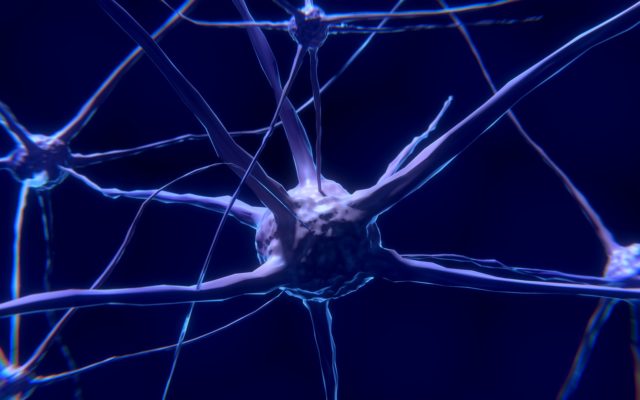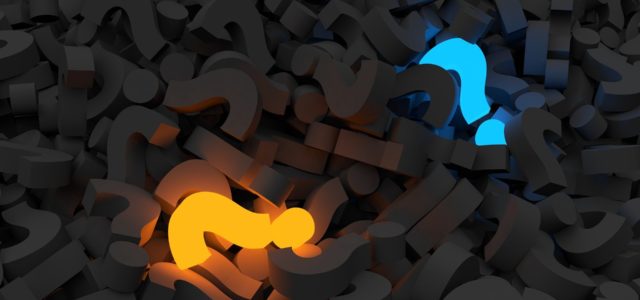Cybersecurity: A ‘no-woman’s’ world!? The word ‘unprecedented’ seems too weak to convey just how much the dimensionless operational space of digital (r)evolution requires instantaneous reaction. Striving for knowledge brought me far beyond my own personal horizons of discernibility.
With the mission to create and scale globally an inclusive ‘authors-publisher-readers’ circle of wisdom and expertise; with added determination to gain understanding by carefully selecting the best information sources (Dis moi où cherche! Mais où?) and reading between the lines, multiplied by a thirst for knowledge-sharing by industry experts, and as part of my ‘Top Cyber News’ extended roundtable series; I encouraged ‘Men in the Arena’ Charles (Chuck) Brooks, Stewart Skomra, Mike Quindazzi and Scott Schober to create a series of articles entitled ‘The Globality Quotient: Cybersecurity’ which was published by Dennis J. Pitocco for BizCatalyst360 – an award winning digital magazine.
The Globality Quotient: Cybersecurity
Cybersecurity – Prevention And Protection.
Cybersecurity – What is Ethical Hacking or a Hacker is a Hacker ..
Cybersecurity “Hacked Again” & Women in Digital Universe
The central topic of these essays is cybersecurity. A fundamental and delicate question at the heart of my work is: how to motivate my readers to want to learn more. We write by a way of motivation and to set a context with a brief personal background.
“It is wonderful to see Ludmila successfully bridging a gender gap in our industry. I read your articles and I am first impressed by the sophistication and sense of weightlessness with which you describe some complicated scientific and technical concepts, imparting an understanding of complex ideas with simplicity and clarity.
Elegance and artistry is indeed a rare combination in writing on science and technology. You and Chuck present a balanced view of the issues and competing priorities while elucidating a 360 degree strategic change agenda. Respect!“
Scott Schober, CEO at Berkeley Varitronics Systems, Inc., Author, Cybersecurity Expert, Speaker
I advocate a Systems Thinking approach in educating our readers and business associates on digital transformation, emerging technologies and cybersecurity. After all, without education who would even bother to police the systems for security or safety. Too often we assume others are not that bad and hope for the best. Systems thinking forever changed the way I think about the world and approach issues. An open immeasurable non-linear system – the Cyber Space, where cyber threats and cybersecurity are two of many (to be defined) elements of this system.
The discipline of systems thinking is more than just a collection of tools and methods. Systems thinking is a philosophy and a methodology for understanding behaviour of complex dynamic systems.
”It’s been said that systems thinking is one of the key management competencies for the 21st century. As our world becomes ever more tightly interwoven globally and as the pace of change continues to increase, we will all need to become increasingly “system-wise.”Paul Ferrillo, Of Counsel, Senior litigation, corporate & cyber crisis lawyer Weil Gotshal LLP.“The mindset of the industrial world assumes that there is a key to prediction and control. But self-organizing, nonlinear feedback systems are inherently unpredictable. They are not controllable. They are understandable only in the most general way. The goal of foreseeing the future exactly and preparing for it perfectly is unrealizable. The idea of making a complex system do just what you want it to do can be achieved only temporarily, at best. We can never fully understand our world, not in the way our reductionistic science has led us to expect….”“Systems thinking leads to another conclusion, however—waiting, shining, obvious as soon as we stop being blinded by the illusion of control. It says that there is plenty to do, of a different sort of “doing.” The future can’t be predicted, but it can be envisioned and brought lovingly into being. Systems can’t be controlled, but they can be designed and redesigned. We can’t surge forward with certainty into a world of no surprises, but we can expect surprises and learn from them and even profit from them. We cannot impose our will upon a system. Systems cannot listen. We can listen to what the system tells us, and discover how its properties and our values can work together to bring forth something much better than could ever be produced by our will alone.”
Cybersecurity is becoming the most important security topic of the future – particularly in the age of digitalization.
Organizations are finding themselves under the pressure of being forced to react quickly to the dynamically increasing number of cybersecurity threats. Since attackers have been using an attack life cycle, organizations have also been forced to come up with a vulnerability management life cycle.
The threat landscape is changing constantly and, probably, by the time you have finished reading this article, a new vulnerability has been discovered. It’s for this reason that the foundation of knowledge and best practice is so important, because it will assist decision makers in rapidly absorbing new challenges and applying security principles to remediate threats.
People and organizations need to trust that their digital technologies are safe and secure; otherwise they won’t embrace digital transformation. Digitalization and cybersecurity must evolve hand in hand.
An Example – The Charter Of Trust – An Unprecedented Cybersecurity Initiative
On February 16, 2018, at the Munich Security Conference comprised of the most important decision-makers of international security policy, signed the Charter of Trust – the baseline standards for cybersecurity – for a secure digital world.
I consider and will further develop my study, resembling the Charter Of Trust as a System, formed by global corporations to create trust in a secure digital world. The Charter of Trust Partners Diagram:
“Seeing systems whole requires more than being “interdisciplinary,” if that word means, as it usually does, putting together people from different disciplines and letting them talk past each other. Interdisciplinary communication works only if there is a real problem to be solved, and if the representatives from the various disciplines are more committed to solving the problem than to being academically correct.”
We are living in a complex and messy system which cannot be controlled. Where every solution creates a NEW problem. Why is cybersecurity so hard?
- It’s not just a technical problem
- The rules of cyberspace are different from the physical world’s
- Cybersecurity law, policy, and practice are not yet fully developed
- There’s not enough manpower in the world to make sure networks are 100% secure 100% of the time, especially with the prevalence of a cloud-based infrastructure.
“Today’s Information Systems Technology Automation has a long way to go and does provide enormous opportunity for Cyber Security Threats.Macro Trends relentlessly reducing incidents of and harm from Cyber Security threats: a. Code-Makers will always outrun Code-Breakers, b. IoT pushing Computer-Control-Communications EVERYWHERE and within EVERY-‘THING’ decimating “Single Points of Failure” Threat Vectors, c. Distributed Ledger – Blockchain-enabled Automation – pushing Value out to the Edge at the points of Value-Creation and Value-Exchange – Smaller and Smaller Values in Greater and Greater numbers making Cost of Attack much Greater than Reward to Hacker.As we move forward with more and more automation, the Macro Trends will mitigate the opportunities for Bad Actors – there is no way to hold it back – it is a Tsunami that will overwhelm and drown complacent Hackers – it is a Neutron Star about to collapse into a Black Hole and draw all complacent Bad Actors across an Event Horizon with no turning back from being Crushed in the Gravitational Pull of the Microcosm.”Stewart Skomra, Vice President & General Manager Americas, Mobile Workforce, Inc.
You can’t teach understanding, you construct it. Now is the time for calm, rational, holistic planning and methodical action. Time for diversity and inclusion. Time for emerging technologies to create and add positive values in society and bring return on capital and human capital invested globally. Time to embrace Augmented and Artificial Intelligence solving the humanity’s most burning problems. Time for women to step on the dance floor of emerging technologies and cybersecurity industries. Re-skilling is a great issue. Inclusion is as important as innovation. We will have to go into learning mode, be willing to be taught, by each other and by the systems and making sure that trust, security and ethics in technology is essential in the decades to come.
Let’s face it, the universe is messy, it is nonlinear, turbulent, and chaotic. Nevertheless, it is dynamic and fast moving in all directions at once. It spends its time in a transient behaviour on its way to somewhere else, not in mathematically neat equilibrium, for example entropy. It self-organizes and evolves without any inputs from external sources. Thus, creating diversity, not uniformity. That’s what makes the world interesting, that’s what makes it beautiful, and that’s what makes it work.
Article by channel:
Everything you need to know about Digital Transformation
The best articles, news and events direct to your inbox
Read more articles tagged: Cyber Security, Featured










